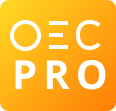Sierra Leone-South Korea Trade: In 2022, Sierra Leone exported $14.2M to South Korea. The main products that Sierra Leone exported to South Korea were N/A. Over the past 5 years the exports of Sierra Leone to South Korea have decreased at an annualized rate of 1.42%, from $15.2M in 2017 to $14.2M in 2022.
In 2022, Sierra Leone did not export any services to South Korea.
South Korea-Sierra Leone Trade: In 2022, South Korea exported $9.07M to Sierra Leone. The main products that South Korea exported to Sierra Leone were N/A. Over the past 5 years the exports of South Korea to Sierra Leone have increased at an annualized rate of 0.78%, from $8.73M in 2017 to $9.07M in 2022.
In 2022, South Korea did not export any services to Sierra Leone.
Comparison In 2023, Sierra Leone ranked 152 in total exports ($1.52B), and does not have data regarding Economic Complexity Index. That same year, South Korea ranked 4 in the Economic Complexity Index (ECI 1.85), and 5 in total exports ($645B).

